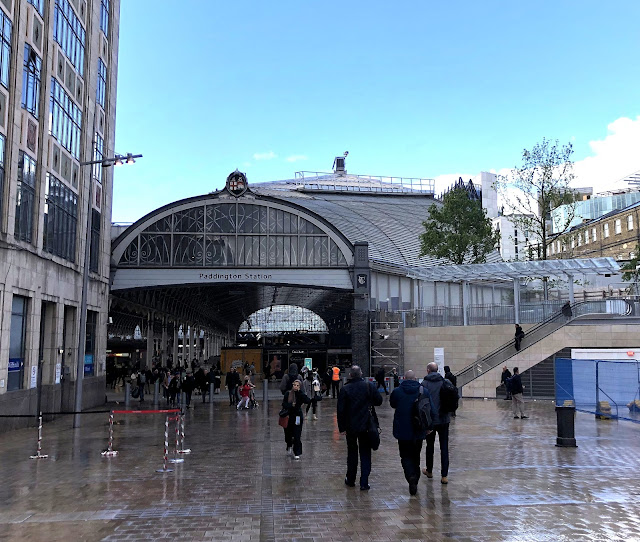Although we were in America for 10 days, the only train I saw all the time I was there was on the dedicated Dulles airport metro. Running parallel to the airport approach road, the Washington Metro Silver Line provides a direct link with the city centre. Though we travelled from and to the American international airport by car, at Heathrow we took the equivalent rapid transit system from Terminal 5 to London Paddington, which takes a mere 15 minutes to reach central London. The only other stop is the one serving terminals two and three. Once out of the tunnels and onto the GWR main line, the Heathrow Express certainly lives up to its name, whisking its passengers into town in comfortable EMU Class 387 stock with overhead transmission.
Its always a pleasure to arrive at Paddington, a vibrant and attractive station in so many ways, combining the old with the new. One of the original station approaches has had its cladding removed since we were there a year ago to reveal once again the entrance next to the former railway hotel - now the Hilton.





